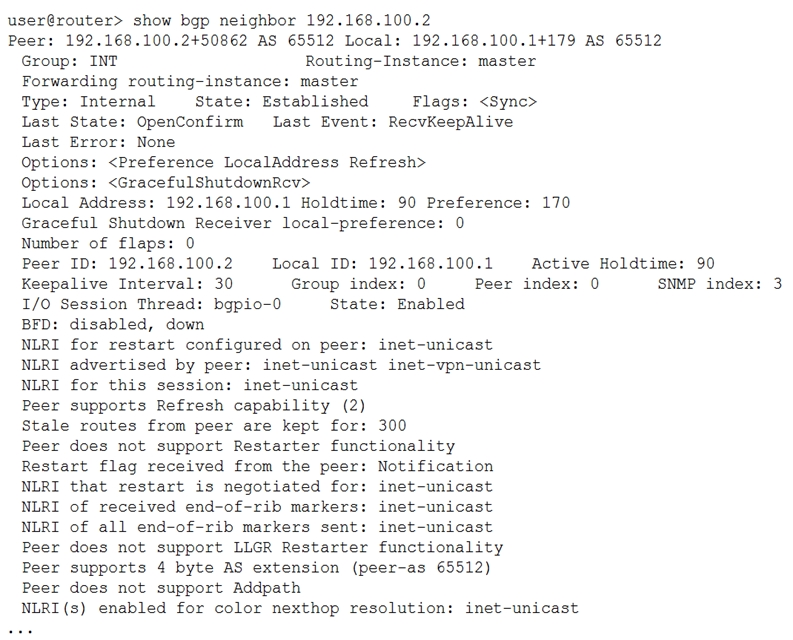
Referring to the exhibit, the local BGP router is receiving IPv4 routes from the BGP neighbor, but it is not receiving L3 VPN routes from the BGP neighbor.
Which two actions should you take to solve this problem? (Choose two.)

Referring to the exhibit, the local BGP router is receiving IPv4 routes from the BGP neighbor, but it is not receiving L3 VPN routes from the BGP neighbor.
Which two actions should you take to solve this problem? (Choose two.)
The local BGP router needs to be configured to support the IPv4 and L3 VPN address families to properly receive those routes from its neighbor. The exhibit shows that the remote BGP neighbor is advertising both 'inet-unicast' and 'inet-vpn-unicast' NLRIs, but the local BGP router is only configured to accept 'inet-unicast'. To resolve the issue, the 'family inet-vpn unicast' statement should be added to the local BGP router to enable it to accept L3 VPN routes. Additionally, since enabling one family may override the default settings, the 'family inet unicast' statement should also be explicitly configured on the local BGP router to continue accepting IPv4 routes. Therefore, the correct actions to take are to configure the 'family inet unicast' and 'family inet-vpn unicast' statements on the local BGP router.
Agree. BC
B,C peer router send both families
This should be A,B. It is clearly shown in the exhibit that inet-unicast is the only NLRI enabled locally, so inet-vpn-unicast needs to be configured too. However, when you do this, it overrides the default NLRI for a peer which is inet-unicast, resulting in only inet-vpn-unicast being advertised to the peer. To continue using inet-unicast this must now also be configured explicitly.
Sorry, B,C.
abcxyz12 is right. Totally agree.
The combination AD or BC both will solve the problem. The point is you need to enable both address families either at BGP(global) , Group or Neighbor level.
It is clearly shown in the exhibit that inet-unicast is the only NLRI enabled locally, so inet-vpn-unicast needs to be configured too. However, when you do this, it overrides the default NLRI for a peer which is inet-unicast, resulting in only inet-vpn-unicast being advertised to the peer. To continue using inet-unicast this must now also be configured explicitly.
B and C. The output shows how the peer is advertising inet-vpn-unicas and inet-unicast. Just that discards changes in the remote end, so A and D are discarded.
B and C The output clearly shows how the remote peer is advertising inet-unicast and inet-vpn-unicast. So this basically discards answers A and D for changes in the remote end.
A and D is incorrect, as the output of NLRI clearly shows that the neighbor has the relevant commands configured.